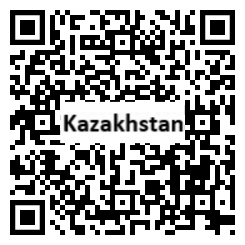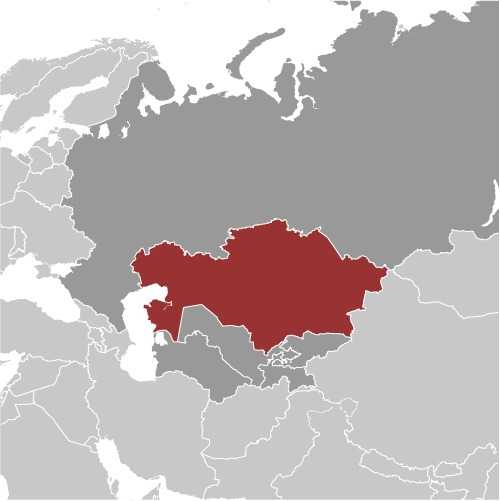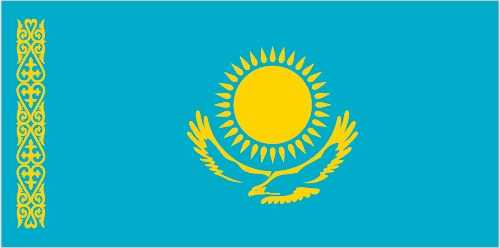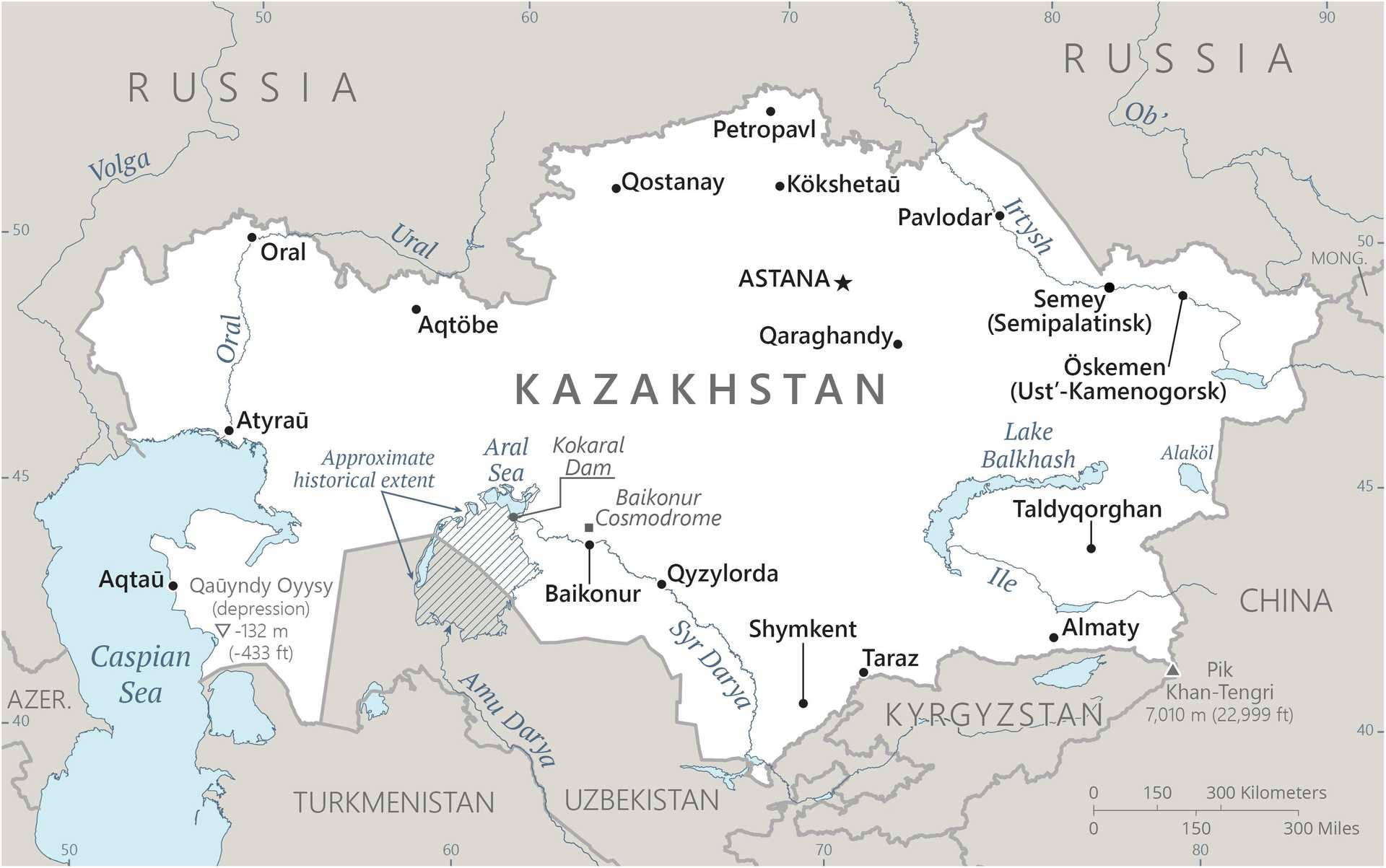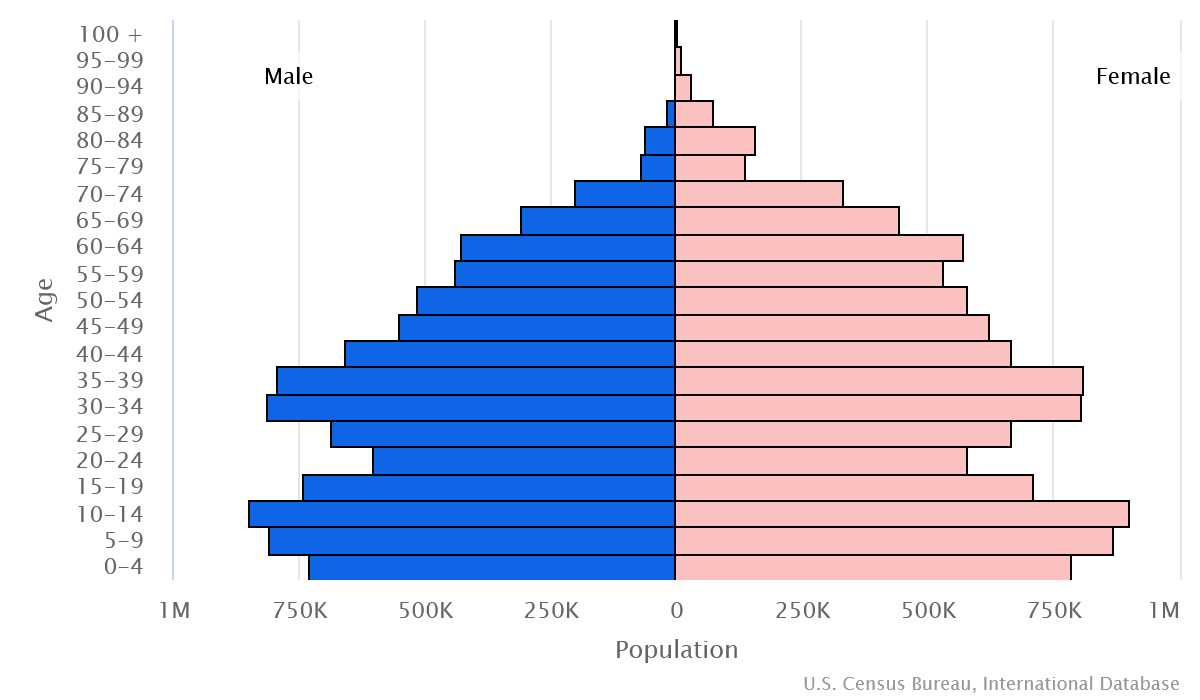Introduction
Background
Ethnic Kazakhs, a mix of Turkic nomadic tribes, migrated to the region in the 15th century. Russia conquered the area in the 18th and 19th centuries, and Kazakhstan became a Soviet Republic in 1925. The country gained independence in 1991.
Geography
Area
total: 2,724,900 sq km
land: 2,699,700 sq km
water: 25,200 sq km
Climate
continental, cold winters and hot summers, arid and semiarid
Natural resources
major deposits of petroleum, natural gas, coal, iron ore, manganese, chrome ore, nickel, cobalt, copper, molybdenum, lead, zinc, bauxite, gold, uranium
People and Society
Population
total: 20,260,006
male: 9,817,172
female: 10,442,834 (2024 est.)
Ethnic groups
Kazakh 71%, Russian 14.9%, Uzbek 3.3%, Ukrainian 1.9%, Uyghurs 1.5%, German 1.1%, Tatar 1.1%, other 4.9%, unspecified 0.3% (2023 est.)
Languages
Kazakh (official, Qazaq) 80.1% (understand spoken language), Russian (understand spoken language) 83.7%, English (understand spoken language) 35.1% (2021 est.)
Religions
Muslim 69.3%, Christian 17.2% (Orthodox 17%, other 0.2%), Buddhism 0.1%, other 0.1%, non-believers 2.3%, unspecified 11% (2021 est.)
Population growth rate
0.86% (2024 est.)
Government
Government type
presidential republic
Capital
name: Astana
Executive branch
chief of state: President Kasym-Zhomart TOKAYEV (since 20 March 2019)
head of government: Prime Minister Olzhas BEKTENOV (since 6 February 2024); note - Alikhan SMAILOV resigned on 5 February 2024
Legislative branch
description: bicameral Parliament of the Republic of Kazakhstan consists of:
Senate (50 seats); 40 members indirectly elected by 2-round majority vote by the oblast-level assemblies and 10 members appointed by decree of the president; members serve 6-year terms, with one-half of the membership renewed every 3 years)
Mazhilis (98 seats; 69 members directly elected in a single national constituency by party list proportional representation vote (5% minimum threshold to gain seats) and 29 directly elected in single-seat constituencies to serve 5-year terms
Economy
Economic overview
oil and gas giant, with growing international investment; domestic economy hit hard by COVID-19 disruptions; reforming civil society and improving business confidence; legacy state controls and Russian influence inhibit growth and autonomy
Real GDP (purchasing power parity)
$512.002 billion (2022 est.)
$496.126 billion (2021 est.)
$475.672 billion (2020 est.)
Real GDP per capita
$26,100 (2022 est.)
$26,100 (2021 est.)
$25,400 (2020 est.)
Agricultural products
wheat, milk, potatoes, barley, watermelons, sunflower seeds, cantaloupes/melons, onions, maize, linseed (2022)
Industries
oil, coal, iron ore, manganese, chromite, lead, zinc, copper, titanium, bauxite, gold, silver, phosphates, sulfur, uranium, iron and steel; tractors and other agricultural machinery, electric motors, construction materials
Exports
$93.581 billion (2022 est.)
$71.726 billion (2021 est.)
$49.273 billion (2020 est.)
Exports - partners
China 14%, Italy 13%, Russia 9%, UK 8%, Netherlands 6% (2022)
Exports - commodities
crude petroleum, gold, refined copper, iron alloys, radioactive chemicals (2022)
Imports
$60.147 billion (2022 est.)
$49.597 billion (2021 est.)
$46.502 billion (2020 est.)
Imports - partners
Russia 29%, China 28%, Germany 5%, South Korea 4%, Turkey 3% (2022)
Imports - commodities
garments, cars, broadcasting equipment, plastic products, packaged medicine (2022)
Exchange rates
tenge (KZT) per US dollar -
Exchange rates:
460.165 (2022 est.)
425.908 (2021 est.)
412.953 (2020 est.)
382.747 (2019 est.)
344.706 (2018 est.)
Page last updated: Tuesday, May 07, 2024
